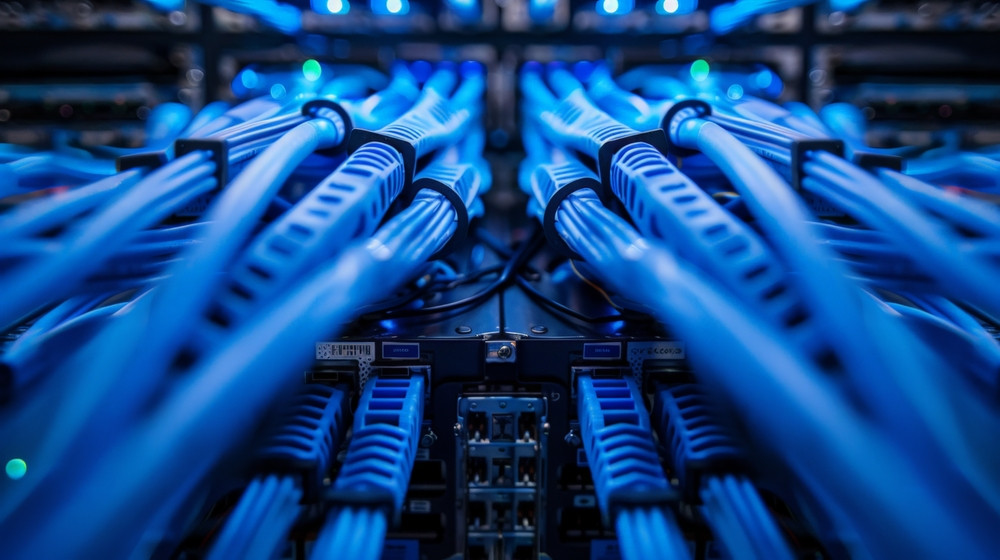Optimizing Networking for AI Workloads: A Comprehensive Guide

Overview of AI Workloads
AI workloads entail computational tasks in machine learning, deep learning, data analytics, and handling unstructured images and text. They are classified into training and inference. Training analyzes massive datasets to find patterns. Inference applies trained models to fresh data.
Meanwhile, multi-terabyte dataset travels, latency from inter-node communication in distributed GPU clusters, and bandwidth demands make networking for AI workloads challenging. Solutions for GPU interconnects and RDMA over Converged Ethernet help. Nevertheless, growing AI systems need ongoing compute-network throughput adjustment.
The Role of Networking in AI Performance
Networking's Impact on AI Performance
Networking for AI workloads impacts latency in data exchanges between distributed processing nodes. AI tasks in deep learning need moving petabytes of training data and billions of model parameters across GPUs or TPUs. Training times for large models can stretch by weeks without low-latency networking. Plus, lossless data transmission cuts errors and retraining cycles. So, networking bottlenecks in high-performance AI can affect throughput and model convergence.
Critical Components in Networking for AI Workloads
Ethernet switches and routers are foundational to AI infrastructure, enabling the transfer of massive datasets at ultra-high speeds. High-performance Ethernet switches, designed for AI workloads, offer up to 800 Gbps bandwidth per port, ensuring low-latency connections and reliable data delivery within GPU clusters.
Routers supporting dynamic routing protocols (OSPF and BGP) provide scalability when extending AI workloads across hybrid multicloud environments. Apart from that, Remote Direct Memory Access integrated into networking layers avoids CPU involvement to realize better data throughput. Such components help scale AI workflows without losing performance.
Key Networking Requirements for AI Workloads

High Throughput & Bandwidth
Networking for AI workloads demands high throughput and bandwidth to transfer data between numerous GPUs operating in parallel. E.g., contemporary GPUs require up to 800 Gbps per node for real-time AI model training since datasets may exceed petabytes. Insufficient bandwidth causes GPU idle cycles and wastes computational resources. Distributed Disaggregated Chassis confirms line-rate throughput across 32,000 ports and lossless traffic delivery.
Low Latency
Low latency is key to networking for AI workloads for autonomous driving or live analytics. High response times can cause delays in synchronous GPU workloads for lower job efficiency. Although InfiniBand is used here for latencies under 2 microseconds, optimized Ethernet with telemetry can approach competitive latency performance and broader system interoperability.
Scalability
AI workloads scale from a few nodes to clusters with many GPUs. Networking for AI workloads must handle it. Traditional Ethernet architectures face challenges at scale due to multi-hop delays and packet drops. Ethernet-based DDC scales beyond the limits of a single chassis to support up to 32,000 800 Gbps ports. It guarantees expansion without compromising jitter and packet loss.
Ethernet vs. InfiniBand
InfiniBand provides near-perfect performance with lossless data transfer, ultra-low latency, and predictable jitter for high-performance AI clusters. Yet, it locks users into proprietary ecosystems, lacks flexibility, and needs expertise. Ethernet scales cost-effectively with Clos or DDC architectures, integrates with existing data center operations, and supports multi-vendor interoperability. While Ethernet's inherent latency might be higher than InfiniBand's, enhanced telemetry and DDC fabric render Ethernet competitive for AI workload networking.
Best Practices for Deploying Ethernet Networking for AI Workloads
High-Bandwidth, Low-Latency Networks
Networking for AI workloads demands Ethernet that can regulate 400G or 800G speeds for growing data flows. For instance, a single GPU might require over 1 Tbps bandwidth. Meanwhile, switches with RoCE can mimic InfiniBand performance while decreasing CPU overhead and accomplishing sub-microsecond latencies for large-scale AI deployments.
Leverage RDMA Technology
RDMA bypasses CPU intervention for direct memory access between servers. It avoids TCP/IP stack bottlenecks. RoCE lowers latency than TCP/IP and helps attain speeds for AI workloads with up to 50% lower CPU usage. For example, RoCE supports a few microsecond latencies versus hundreds in traditional Ethernet stacks for better neural network training timelines.
AI-Specific Ethernet Switches
Ethernet switches for AI workloads should offer sufficient deep buffering for burst traffic. Priority-based Flow Control guarantees lossless data transmission. At the same time, Enhanced Transmission Selection prioritizes flows. What is more, switches should be looked for that integrate intelligent traffic management according to RDMA-heavy AI data flows.
Scalable, Distributed Architecture
Disaggregated architectures empower compute and storage resources to scale independently. Horizontal scaling, say expanding from 256 to 26,000 GPUs, demands flattened topologies utilizing high-radix switches. For example, a 64-port 400G switch can decrease network tiers for better throughput and lower latencies across distributed AI infrastructures.
Network Automation and Management
Automate Ethernet networking for AI workloads using intent-based tools. Real-time telemetry systems pinpoint congestion and latency issues. Note that AI networks with lower idle compute time can cut job completion times using telemetry-driven optimizations for cost savings.
Security Considerations
Isolating AI workloads employing VLANs or VXLANs matters when handling proprietary data. TLS 1.3 encryption offers low overhead with high security for data in transit. It guarantees that sensitive model parameters are confidential. Not only that, but zero-trust architectures help safeguard AI datasets against lateral threats within shared environments.
Power Efficiency
AI workloads increase power demands. For instance, pluggable optics consume over 50% of switch power at 51.2 Tbps speeds. Move to co-packaged optics to save at least 30% energy per port. Additionally, liquid cooling systems, including immersion cooling, decrease energy use by up to 40% when compared to traditional air cooling in dense AI networking setups.
Multi-Cloud and Hybrid Cloud Integration
Networking for AI workloads in hybrid environments benefit from Ethernet supporting Data Center Interconnect. VXLAN-EVPN enables layer-2 and layer-3 extensions across the cloud and the edge. Edge computing helps avoid inference latencies, so data from IoT sensors reaches AI models faster. It is important for real-time applications like autonomous vehicles.
Click here to learn more about optimized networking solutions for AI workloads.
